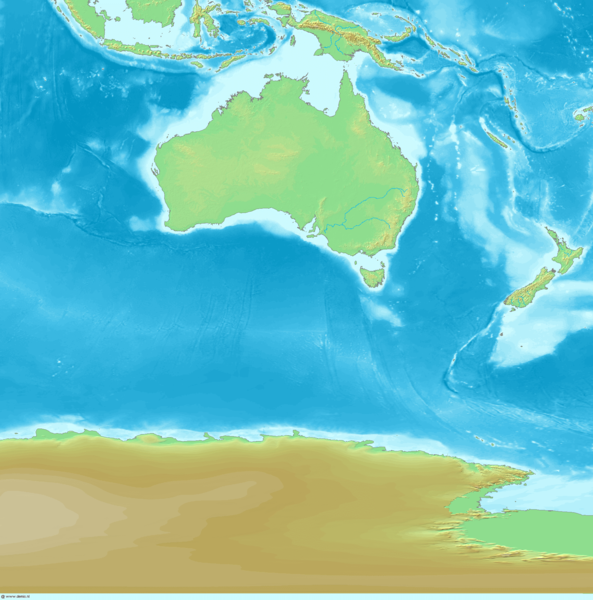West Papua Information Kit





by giving you information with which to end the colonial rape of a beloved nation.





Continental Australia
 |
 |
 |
 |
 |
 |
 |
 |

In geology, Australia (also called Australia-New Guinea, Sahul, Meganesia, Greater Australia or Australinea) is a continent comprising (in order of size) the Australian mainland, New Guinea, Tasmania, and intervening islands, all of which sit on the same continental shelf. These landmasses are separated by seas overlying the continental shelf - the Arafura Sea and Torres Strait between Australia and New Guinea, and Bass Strait between mainland Australia and Tasmania.
When sea levels were lower during the Pleistocene ice age, including the last glacial maximum about 18,000 years ago, the lands formed a single, continuous landmass. During the past ten thousand years rising sea levels overflowed the lowlands and separated the continent into today's low-lying semi-arid mainland and the two mountainous islands of New Guinea and Tasmania.
Geologically the continent extends to the edge of the continental shelf, so the now-separate lands can still be considered a continent.[1] Due to the spread of flora and fauna across the single Pleistocene landmass, the separate lands have a related biota. New Zealand is not on the same continental shelf and so is not part of the continent of Australia but is part of the wider region known as Australasia.
Geology
The continent primarily sits on the Indo-Australian Plate. The lands were joined with Antarctica as part of the southern supercontinent Gondwana until the plate began to drift north about 96 million years ago (mya). For most of the time since then, Australia-New Guinea has remained a single landmass.
Biology
As the continent drifted north, unique flora and fauna developed. Marsupials and monotremes also existed on other continents, but only in Australia-New Guinea did they out-compete the placental mammals and come to dominate. Bird life also flourished, in particular the ancestors of the great passerine order that would eventually spread to all parts of the globe and account for more than half of all living avian species.
Animal groups such as macropods, monotremes, and cassowaries are endemic to Australia. There were three main reasons for the enormous diversity that developed in both plant and animal life.
- While much of the rest of the world underwent significant cooling and thus loss of species diversity, Australia-New Guinea was drifting north at such a pace that the overall global cooling effect was roughly equalled by its gradual movement toward the equator. Temperatures in Australia-New Guinea, in other words, remained reasonably constant for a very long time, and a vast number of different plant and animal species were able to evolve to fit particular ecological niches.
- Because the continent was more isolated than any other, very few outside species arrived to colonise, and unique native forms developed unimpeded.
- Finally, despite the fact that the continent was already very old and thus relatively infertile, there are dispersed areas of high fertility. Where other continents had volcanic activity and/or massive glaciation events to turn over fresh, unleached rocks rich in minerals, the rocks and soils of Australia-New Guinea were left largely untouched except by gradual erosion and deep weathering. In general, fertile soils produce a profusion of life, and a relatively large number of species/level of biodiversity. This is because where nutrients are plentiful, competition is largely a matter of outcompeting rival species, leaving great scope for innovative co-evolution as is witnessed in tropical, fertile ecosystems. In contrast, infertile soils tend to induce competition on an abiotic basis meaning individuals all face constant environmental pressures, leaving less scope for divergent evolution, a process instrumental in creating new species.
For many species, the primary refuge was the relatively cool and well-watered Great Dividing Range. Even today, pockets of remnant vegetation remain in the cool uplands, some species not much changed from the Gondwanan forms of 60 or 90 mya.
Eventually, the Australia-New Guinea tectonic plate collided with the Eurasian plate to the north. The collision caused the northern part of the continent to buckle upwards, forming the high and rugged mountains of New Guinea and, by reverse (downwards) buckling, the Torres Strait that now separates the two main landmasses. The collision also pushed up the islands of Wallacea, which served as island 'stepping-stones' that allowed plants from Southeast Asia's rainforests to colonise New Guinea, and some plants from Australia-New Guinea to move into Southeast Asia. The ocean straits between the islands were narrow enough to allow plant dispersal, but served as an effective barrier to exchange of land mammals between Australia-New Guinea and Asia.
Although New Guinea is the most northerly part of the continent, and could be expected to be the most tropical in climate, the altitude of the New Guinea highlands is such that a great many animals and plants that were once common across Australia-New Guinea now survive only in the tropical highlands (where they are severely threatened by overpopulation pressures).
it is also perpetrated by vitiating inaction of those who are good"
- Martin Luther King.
Home




